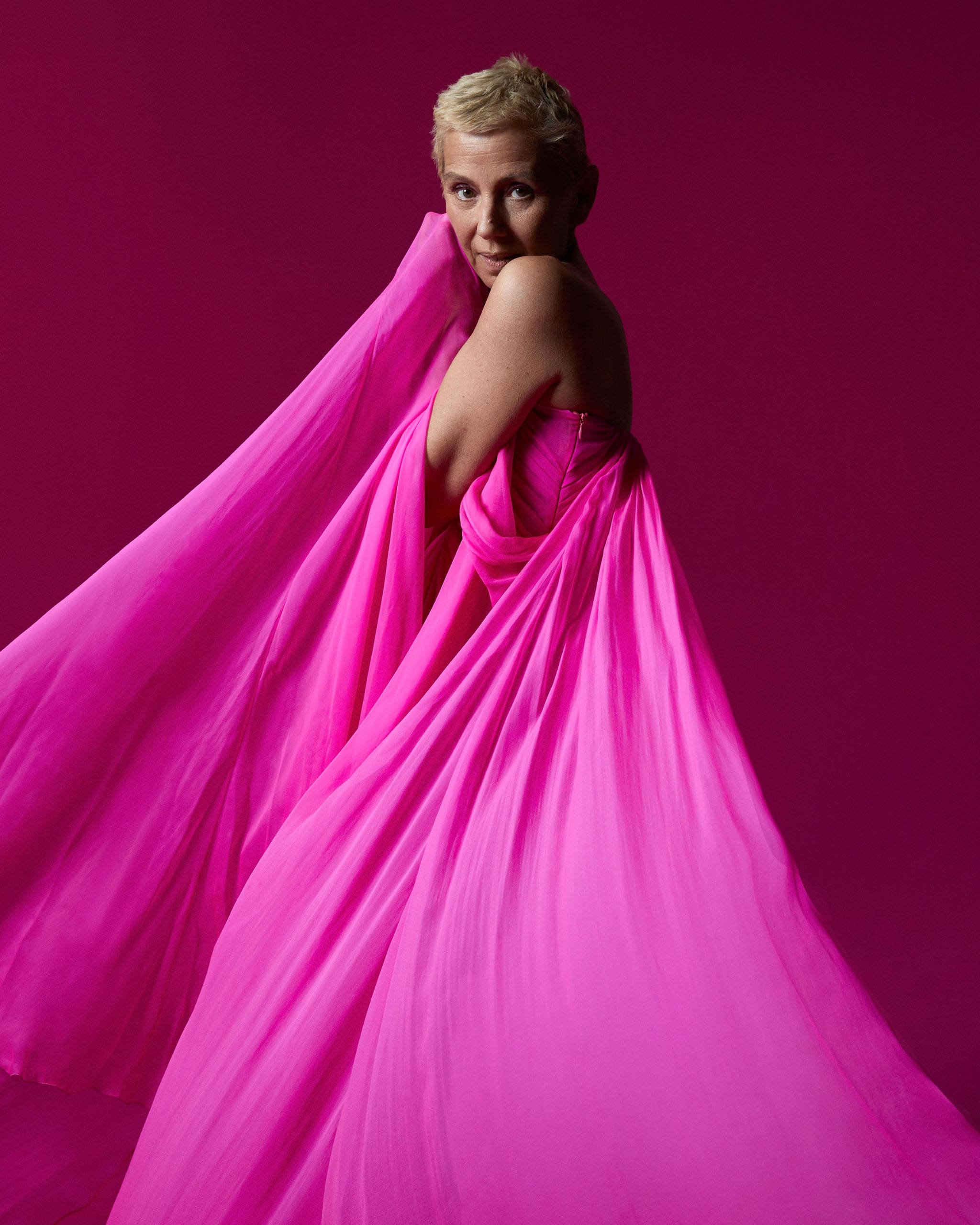Concita De Gregorio. Photo: Pierpaolo Piccioli
In a “creative gesture” that gives hope and invites treatment in time, portraits by Valentino’s creative director Pierpaolo Piccioli highlights the faces of those who have defeated breast cancer in a photographic exhibition inaugurated on 18 October in Rome.
Among the sly waters of the Tiber River is a slice of land where half of Rome was born: the Tiberina Island. Once stood there was the temple dedicated to the god Aesculapius, patron saint of medicine, and today there is the Isola Tiberina Hospital, where about 4,000 women give birth every year. It is a place that is a hymn to life, almost as if it was destined to welcome a ‘creative gesture’ to focus attention on the importance of prevention in the fight against breast cancer on October 18, during the month dedicated to its awareness.
The hospital and Pierpaolo Piccioli, creative director of Valentino, joined forces and organized an exhibition of photographs taken by Piccioli who, under the symbol of the color pink–that signifies breast cancer prevention and the Pink PP collection–composed a portfolio of portraits of women who defeated the tumor, many who are found in the Roman hospital. With this initiative, they have put themselves on the line to emphasize the importance of prevention, emphasizing that the disease today has more possibilities of treatment–and the hope to return to a normal life.


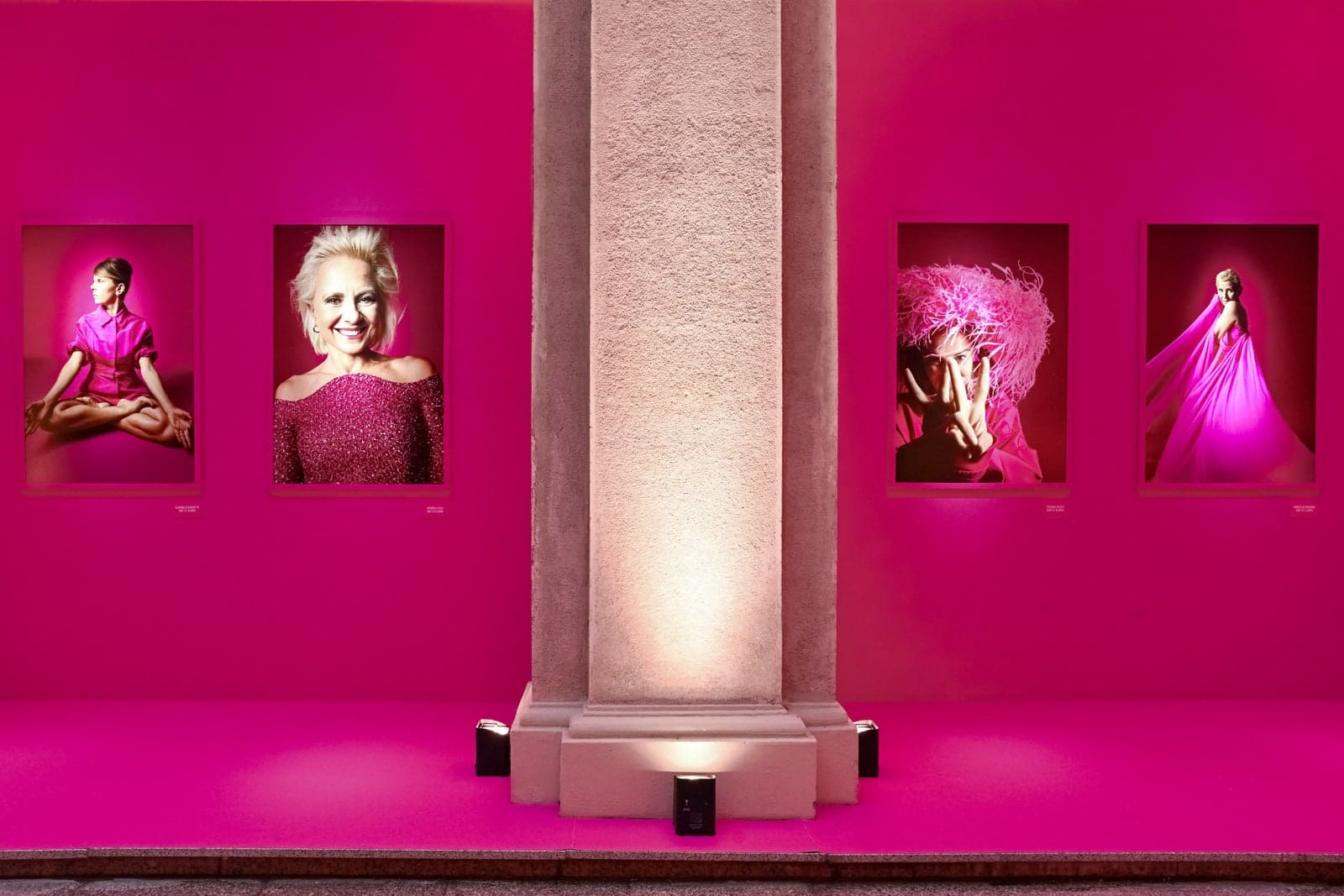
While it is true that breast cancer is the most frequent cancer in women (25% of all cancers), the leading cause of cancer mortality in females, and that in 2022, 55,700 cases were diagnosed in Italy (AIOM-AIRTUM-2022 report data), it is also true that the chances of success of treatment for this type of cancer have increased, thanks to screening programs, innovative therapies, and a proper diagnostic-therapeutic process.
Daniele Piacentini, CEO of Isola Tiberina Hospital, emphasizes that “here we have always paid a lot of attention to female diseases, proposing prevention initiatives and programs that promote healthy lifestyles in various contexts, starting from the school environment to the workplace. The centrality of the person and their care needs are the prerequisites that have led the hospital to the planning of care pathways, designed as organizational contexts for the integration of the disciplinary and professional skills involved in the diagnosis and treatment of certain clinical conditions. “
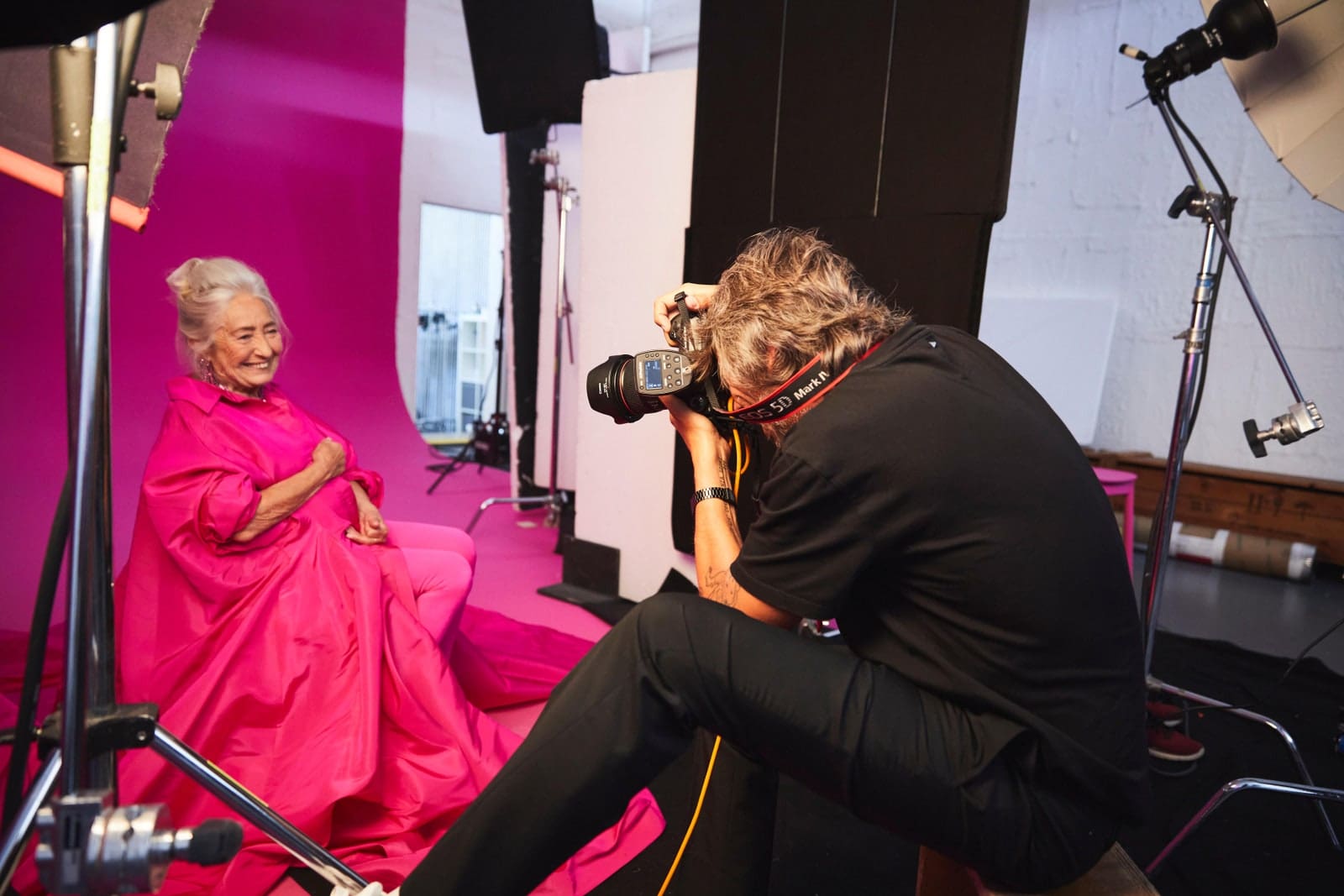
The author of these portraits of strength and fragility in pink–the protagonists wear Pink PP Valentino dresses–-has captured the likeness and feeling of their little big stories of courage, determination, and resilience. The portraits will remain on permanent exhibition in the hospital are symbols of hope for all women.
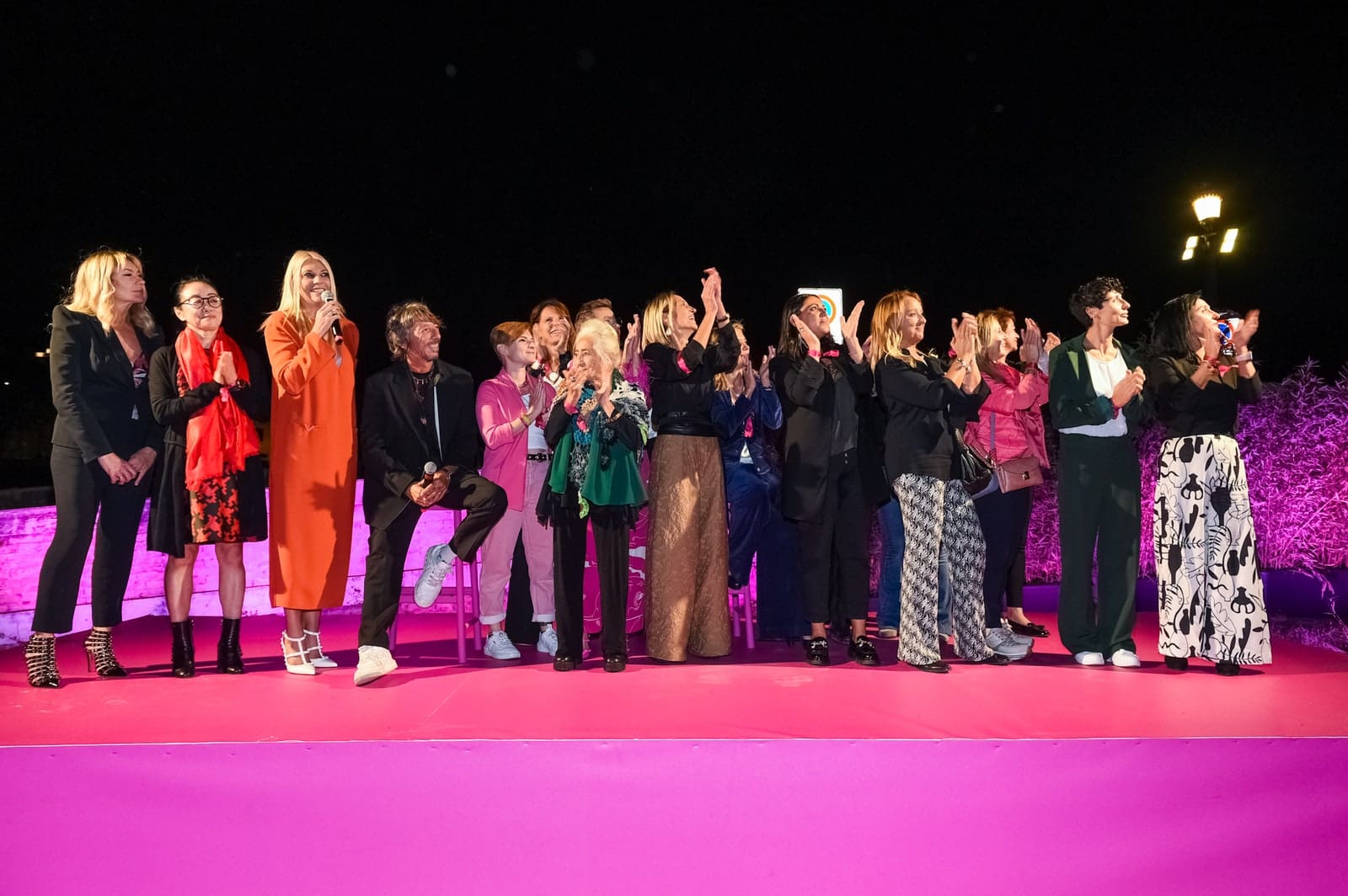
How did this unprecedented creative collaboration with the Isola Tiberina Hospital come about?
As my things are often born, the expedient is almost always friendship. For some years now, the Isola Tiberina Hospital has been lighting up to promote awareness about the disease. A friend who works with the facility put us in touch with the staff and we wondered if there was anything we could do together. It all started from pink, the color of the research and fight against breast cancer, pink which is also our code, and the two things together seemed suitable to support this cause. Pink is a color of resilience, of courage, and that is also the intention behind everything, trying to leave a message of strength and support to all women who are facing this disease.
I honestly didn’t even think about it. When it was proposed, I knew I just had to do it. Regardless of commitments. There was no need to convince me to do it, maybe at some point, they needed to convince me to stop shooting.

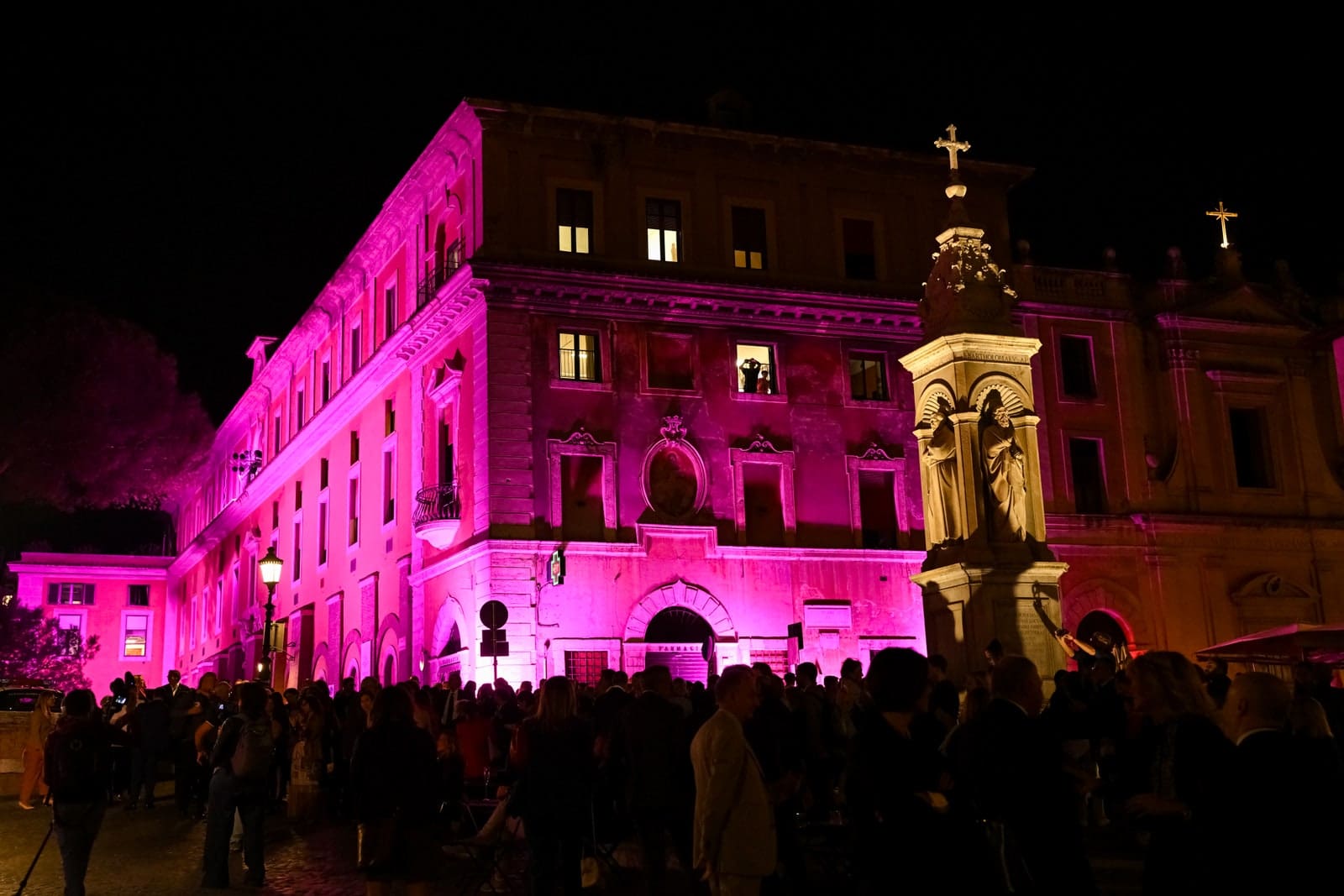
Can you tell me the shoot and the collaboration with these women?
I don’t know if I can tell it in words, because everything I’ve felt and heard, everything they’ve given me is imprinted in the shots. It was a day that took a place of her own in space and time. I don’t remember eating or taking breaks, a few cigarettes every now and then maybe another one, for sure. For the rest, I was caught in a kind of trance. I listened to everything, every single word they addressed to me, I didn’t want to introduce myself to them in a different way but I wanted more than anything else to see them, let their stories occupy everything, let them occupy everything.

What do you think you’ve received, and returned, with your images?
I brought myself, what I can do. I talk through the images and I know the power of them. I chose to dress them with the Valentino Pink PP collection not only for the color but also for the symbol that color has for me. Monochrome choices have the ability to crystallize the context, the figures emerge even sharper, their humanity, and the depth of their emotions. Everything is best seen with just one color. What they gave me was the sharing of an “intimacy” that I can only return through a snap because there is me in there and there are them, each of them, and what we said to each other even in silence. I’m still processing what I’ve tried because it’s a lot and I need to feel it. At the moment if I had to choose one word it would be gratitude, and if I had to choose another it would be amazement.
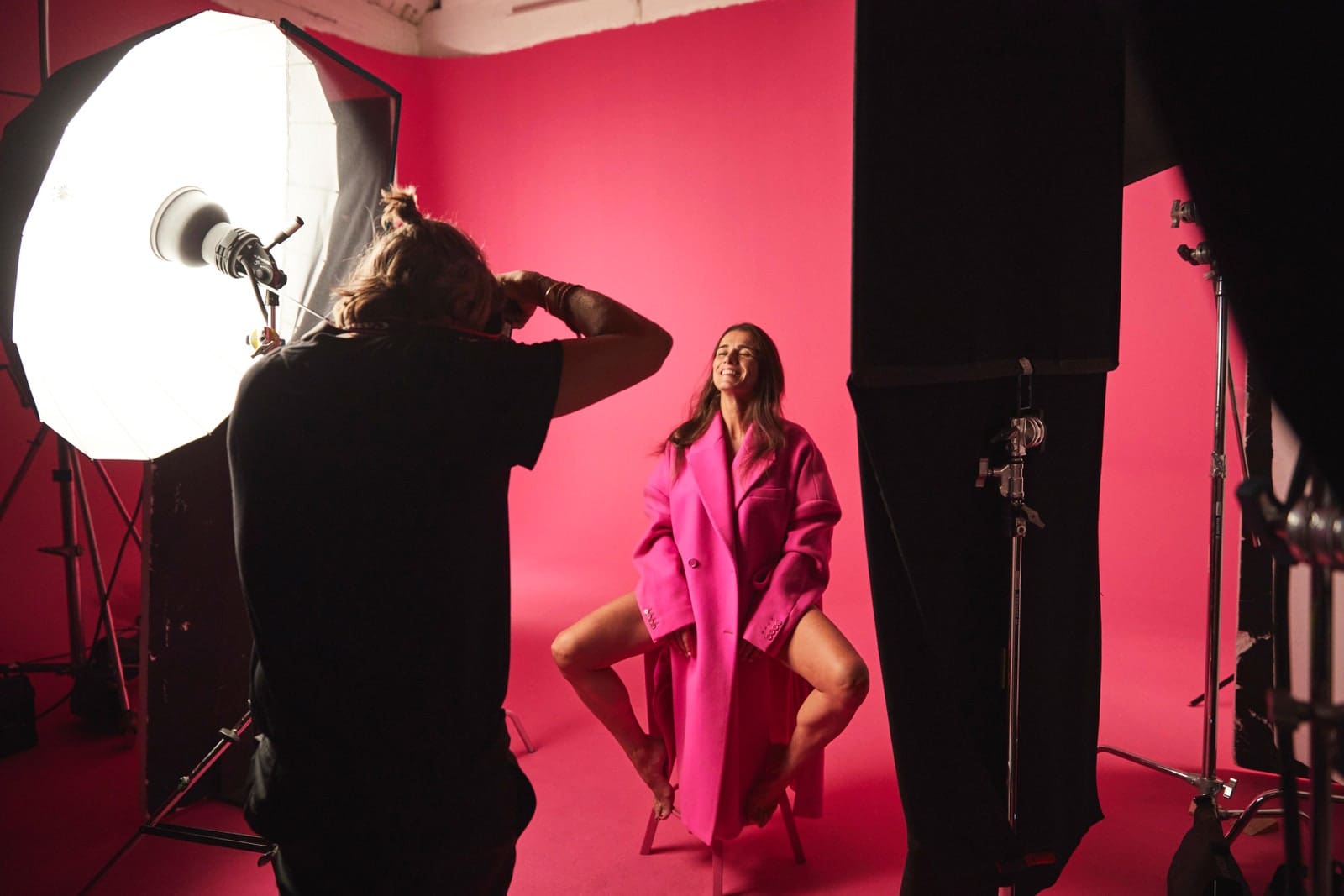
Have you ever experienced a “close” encounter with cancer?
I think that everyone, in a different way, has touched or known the disease; it creates a before and after, there are those who do not talk about it because it is scary and those who want to talk about it for the same reason. All choices must be respected because there is no disease alone, but the people who live it and how they decide to live it.
Prevention is an important emphasis with this exhibition.
I would also like to talk about education because if self-care and the way we look at ourselves were part of a broader education, even scholastic, prevention would probably also become routine and not an exception.
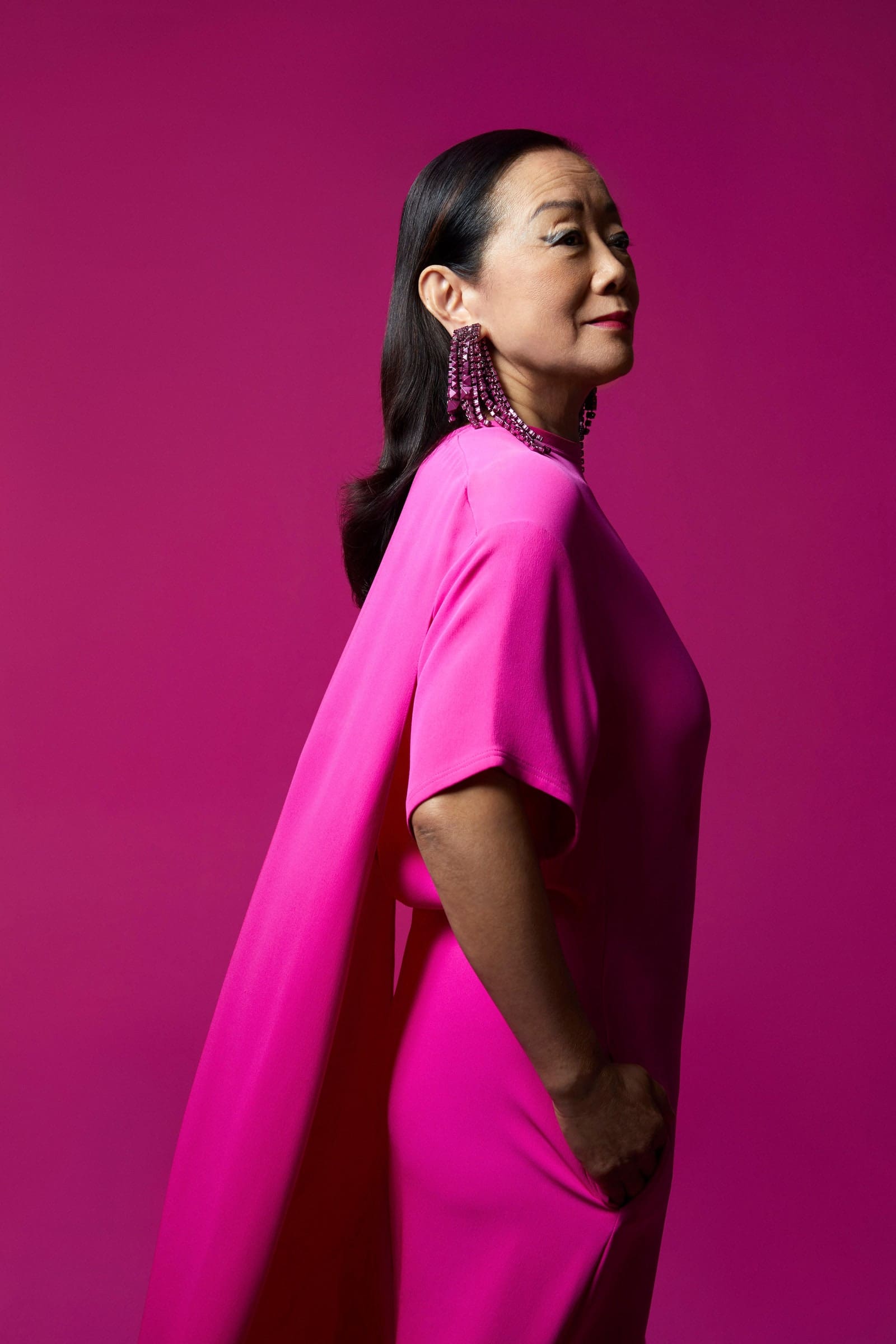
In an interview with GQ, you said: “…I came to fashion through fashion photography. (…) I realized that the images told things, that a photo could tell a story…” How does fashion come to life with with photography?
As I said, photography is one of the most powerful vectors that fashion has. I understood it even before I understood the image, to understand fashion. In one moment a whole narrative is condensed, the months of work, of many people. The shot stops time and sucks it in and brings you back every time you look at that particular photo, campaign, or editorial. Photographing is work that is complex, physical, head, and soul together. I like to do it and it’s something that lets me discover different parts of me every time. I know I’m interested in people, above all else and portraits are my way of getting to know them.

How can fashion be a more powerful means to convey the idea of prevention and cure?
I don’t know that. Surely I can say that fashion speaks transversally to everyone, but really everyone? Fashion is probably a platform that can push messages immediately and easily. The brain processes images much faster than words, but what is certain is that if there is nothing else behind the images, they are forgotten just as quickly. In this circumstance, there was everything, meanings and images and stories and intentions. Maybe we managed to set a precedent that could push others to do the same kind of project.
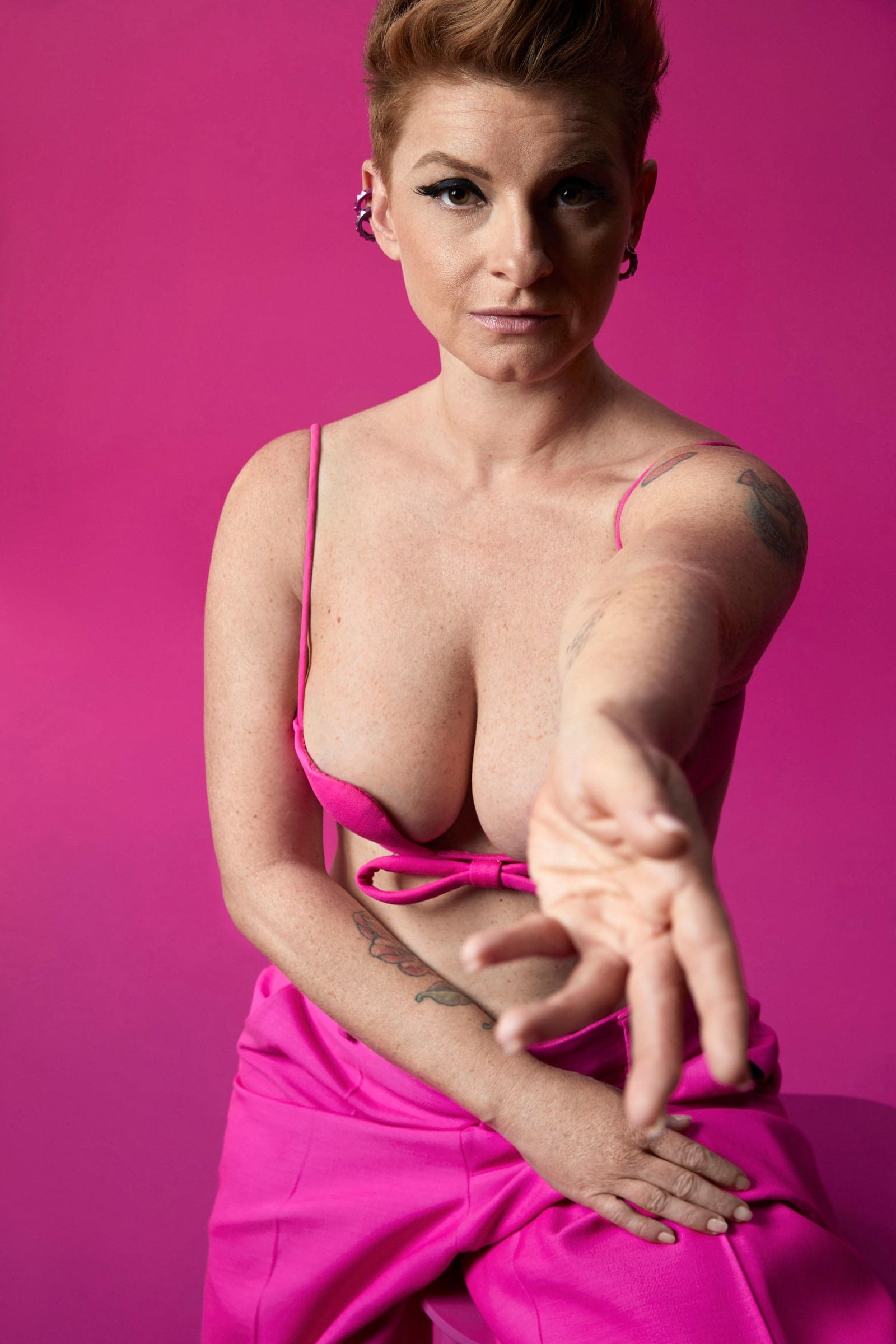
Is there anything you would like to point out after this experience?
That I’m lucky, for many reasons. These women welcomed me, letting me into their lives, they trusted me. They are the ones who made me feel special, maybe I didn’t tell them enough with words and if they don’t mind I’ll take advantage of the time now. Thanks to each of you, I promise to carefully cherish what happened on that endless day, I remember all of you, one by one, I remember exactly what we said to each other and what there was no need to say. I thank you and I am grateful and thank you also for this interview.
Thanks to you Mr Piccioli.
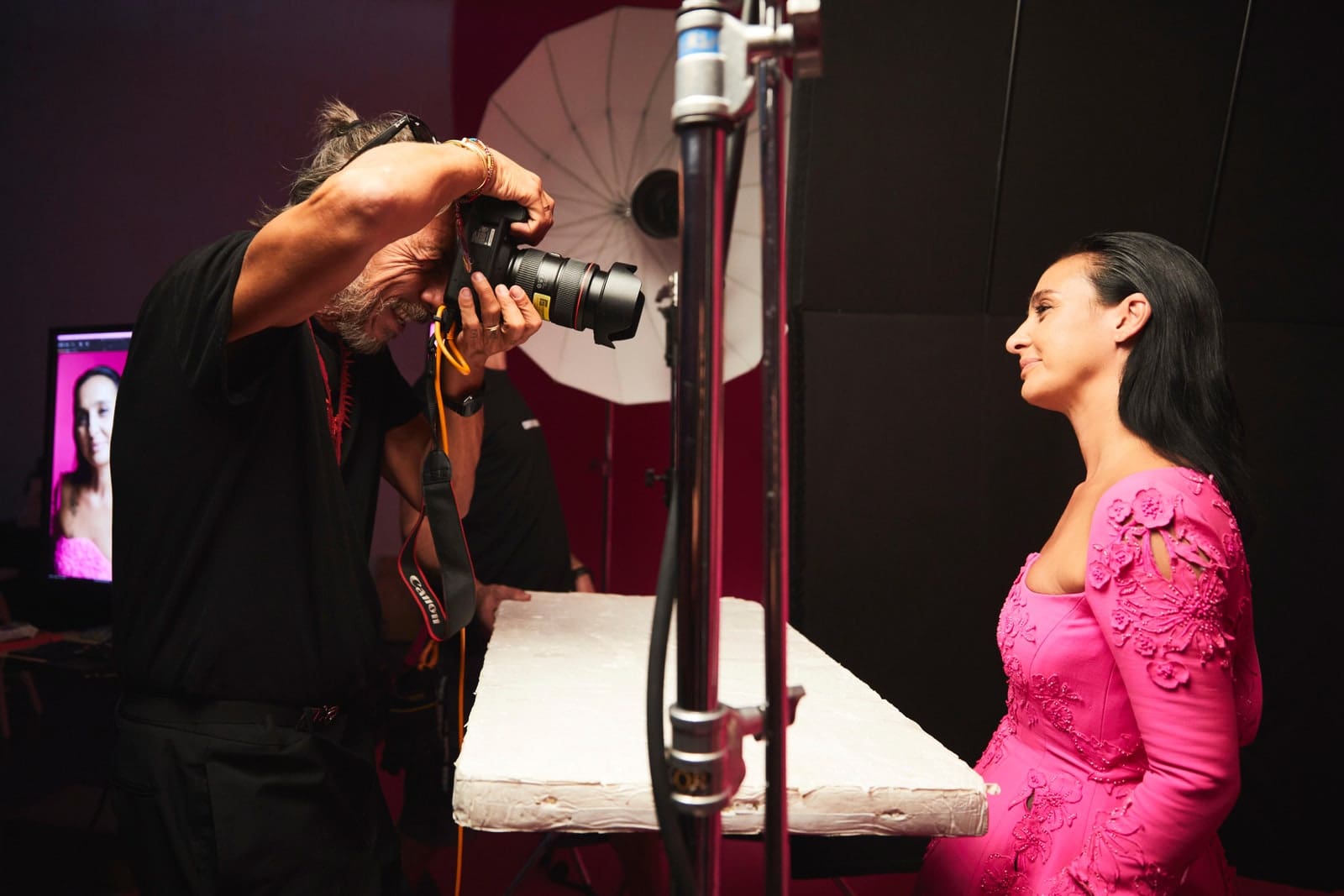
The “Pink PP Portraits” exhibition will be open to visitors by October 30th.
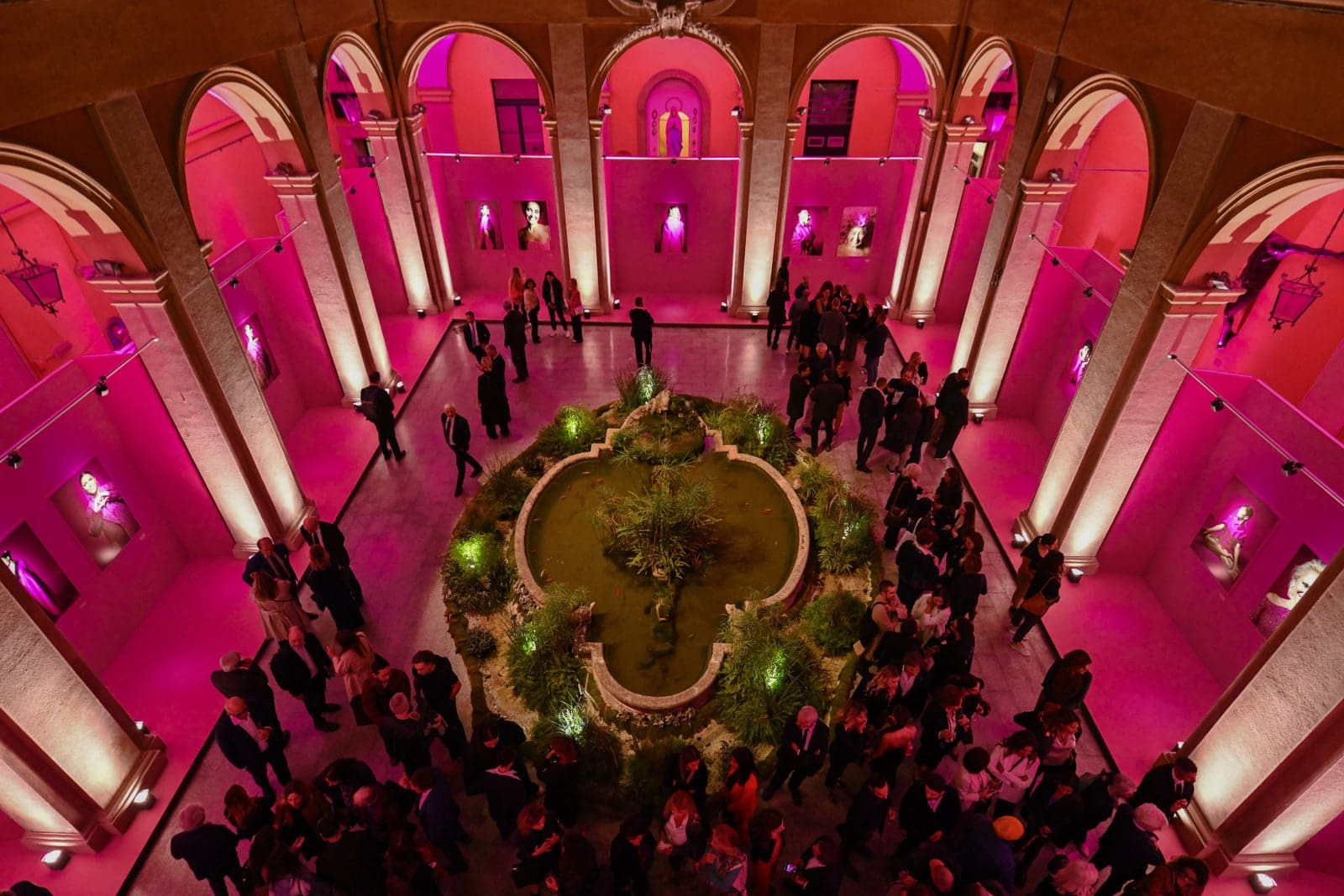
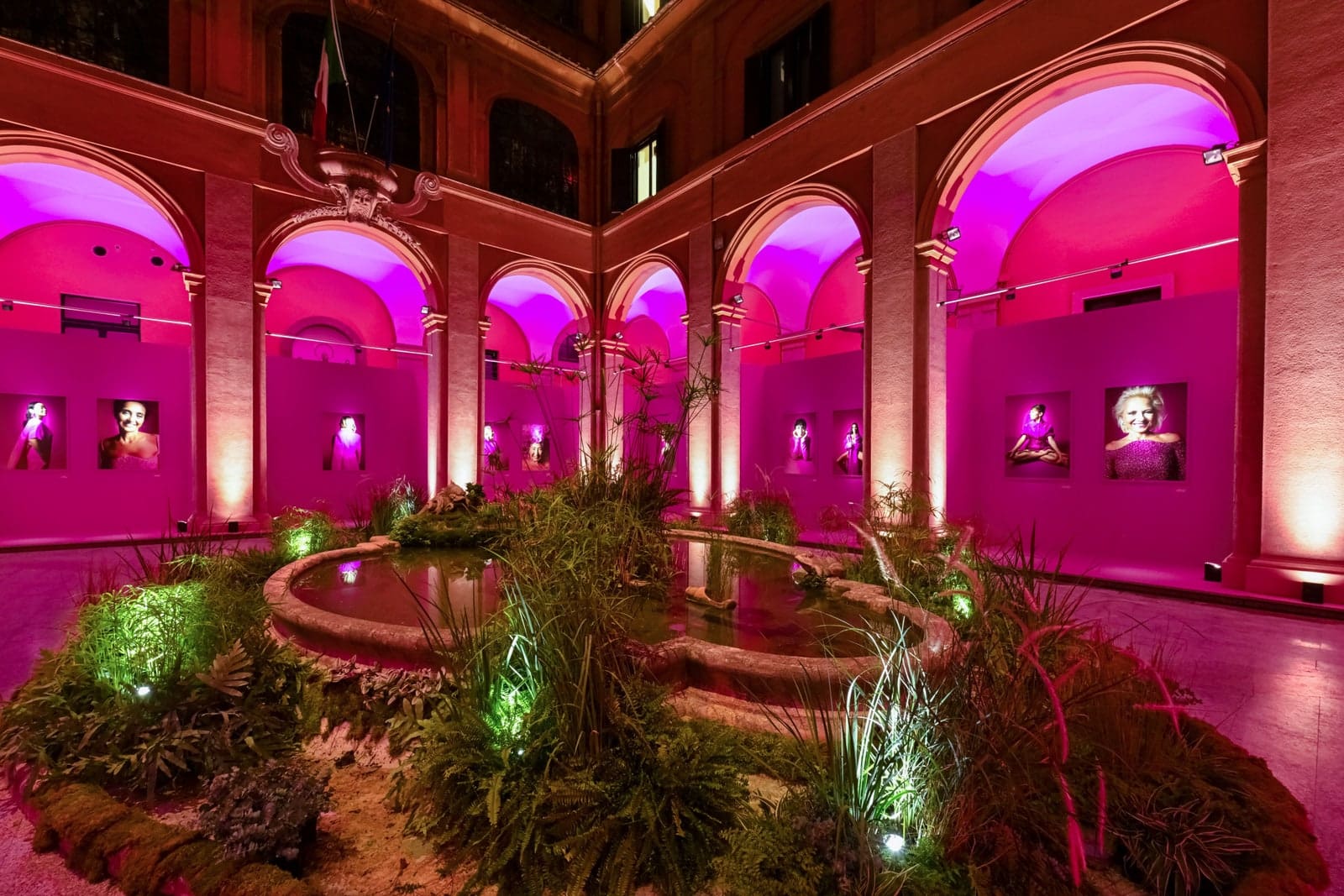
This article was originally published on Vogue Italia.
